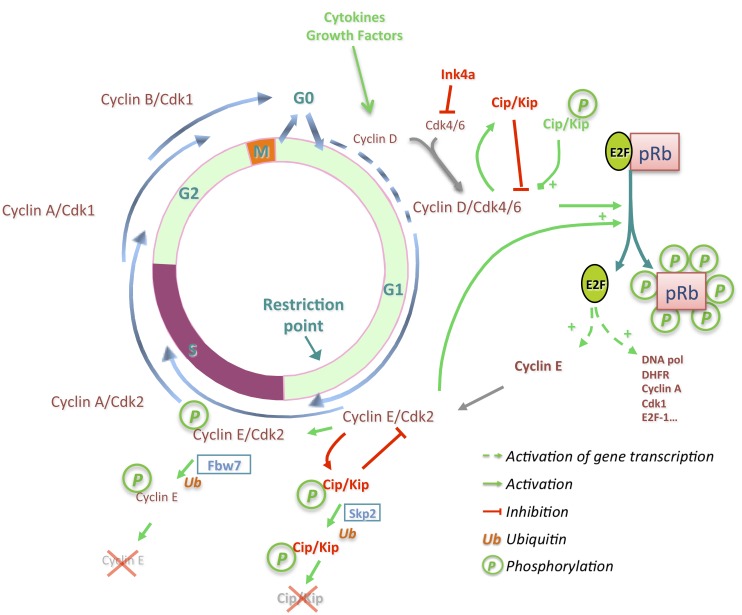Figure 2.
Progression through the different cell cycle phases is under the control of Cdk/cyclin complexes. Ink4 inhibitors impose a threshold on cyclin D expression to bind and activate Cdk4 in G1 phase. Newly formed Cdk4/cyclin D complexes are stabilized by Cip/Kip proteins and phosphorylate p21, changing its inhibitory to an activating state. Cdk4/cyclin D complexes initiate pRb phosphorylation, inducing the release from E2F1 transcription factors and promoting expression of genes implicated in the DNA synthesis phase and S phase progression. Cyclin E associates with Cdk2 enhancing pRb phosphorylation and phosphorylates Cip/Kip proteins leading to their ubiquitination and degradation. Successive association of Cdk2 with cyclin A, after the ubiquitination and degradation of cyclin E by Fbw7, leads to S phase completion and entry into G2 phase. Association of Cdk1 with cyclin A followed by cyclin B1 permits G2/M transition, entry in mitosis, and finally cytokinesis.

